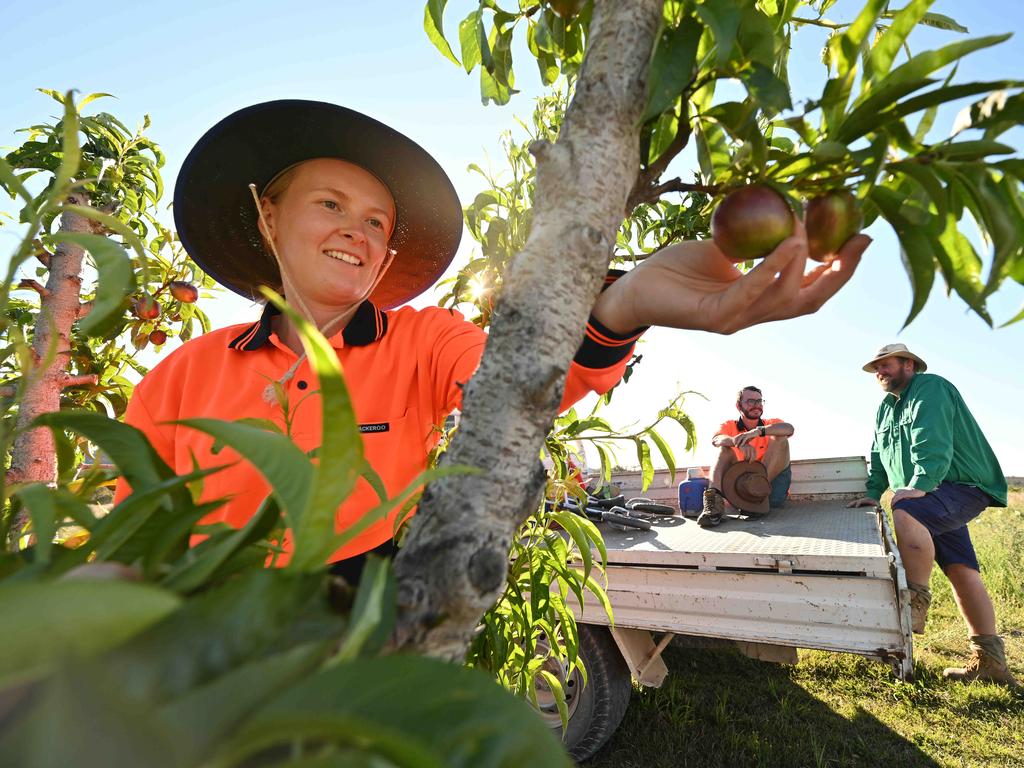Farming jobs scheme fails to lure workers
A government program set up to save millions of dollars’ worth of produce from going to waste has attracted shockingly few workers.
QLD Politics
Don't miss out on the headlines from QLD Politics. Followed categories will be added to My News.
A flagship agriculture scheme established to address Queensland’s critical farm worker shortage has signed up just 85 people – with all but “a few” of those quitting before the eight-week program ended.
The failure of the State Government’s Back to Work in Agriculture Scheme – which provides up to $1500 for workers to temporarily relocate and pick crops in regional Queensland – comes as bombshell new data reveals $31 million in crops had been lost across the state due to the seasonal worker shortage.
The state’s $130 million strawberry industry has been hardest hit, with one-tenth of all crops thrown away.
Queensland’s staggering losses make up 72 per cent of Australia’s $42.8 million in lost produce, according to Growcom’s National Lost Crop Register.
The state government in September launched its agricultural work scheme to help address the worker shortage – providing $1500 in two tranches for up to 500 workers to cover regional relocation costs.

However, just 85 people have accessed or applied for the first $500 after working on a farm for two weeks and not a single worker has yet been paid the additional $1000 for working another six weeks.
Queensland’s $13 billion agriculture industry has been hammered by the pandemic-induced worker shortage with the sector’s value tipped to plunge by $87 million as border closures prevent backpackers from picking produce.
A report released by Ernst & Young last year revealed an extra 26,000 seasonal workers were needed for Australian farmers to manage a successful summer harvest, with Cairns and Wide Bay likely to be hardest hit by the shortage.
Acting Agriculture Minister Yvette D’Ath defended the lack of interest in the program despite just 85 workers starting.
“Only properly completed applications can be considered for funding under the scheme,” she said.
“Properly completed applications are thoroughly assessed against a rigorous set of criteria to ensure the funds are distributed responsibly to maximise the scheme’s intended outcomes.
“The seasonal worker shortage is a national issue and requires a co-ordinated effort from all states, territories and the Commonwealth.”
Ms D’Ath said the state had a range of programs to promote employment opportunities in the agriculture industry.
Growcom policy and advocacy manager Richard Shannon said luring just 85 workers was “disappointing”.
“We do have difficulty attracting Australians,” he said.
Mr Shannon said the $42 million in lost crops was a direct result of not having seasonal workers.
“Those losses are rolling in and we expect them to continue,” he said.
Mr Shannon said more research was needed to understand why the long-term unemployed and city-dwelling workers would not take-up regional farm work.
QUEENSLAND’S LOST CROPS
Berries
Value of industry: $130m
Lost crops: $15.42m
Vegetables
Value of industry: $250m
Lost crops: $11.92m
Bananas
Value of industry: $576m
Lost crops: $2.51m
Other fruit
Lost crops: $1.09m






